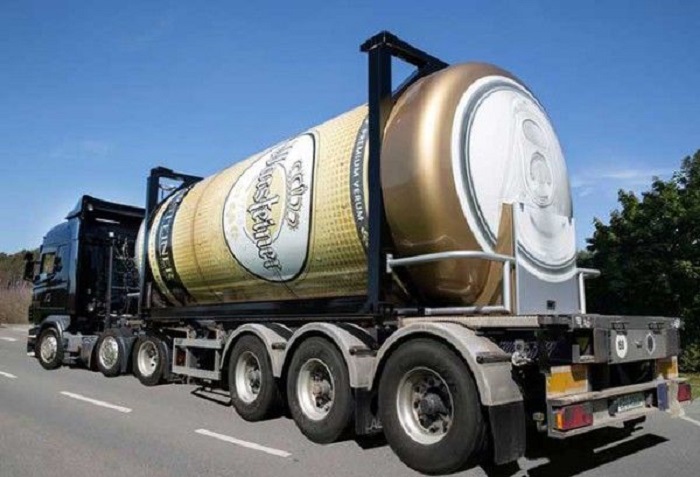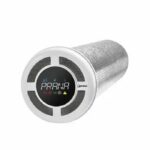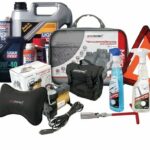Milwaukee’s vibrant beer scene is renowned nationwide, but behind every pint of Milwaukee beer lies a complex logistics puzzle. Brewery freight presents unique challenges that require specialized handling to maintain product quality and ensure timely deliveries. From keg transport to delicate packaged goods, shippers must navigate the city’s bustling docks while preserving the integrity of their shipments.
One key factor is managing temperature control in a city where weather can fluctuate dramatically. Maintaining a consistent dock temperature is critical to prevent spoilage, especially for craft brews sensitive to foam control and cold chain management. Proper dry-van loading techniques become vital to protect brewery freight during transit, minimizing movement and damage.
Utilizing load locks, dunnage air bags, and pallet wrap helps stabilize loads, preventing shifting and crushing inside trailers. These tools are essential when transporting heavy kegs or fragile glass bottles, ensuring they arrive intact and ready for distribution. For Milwaukee shippers, mastering these dry-van loading strategies is the first step toward efficient brewery freight handling, reducing waste and optimizing supply chain flow in a competitive market.
2. Importance of Dry-Van Loading for Milwaukee Beer Shipments
Dry-van loading plays a crucial role in ensuring the safe and efficient transport of Milwaukee beer, especially when handling sensitive brewery freight like keg transport and packaged bottles. Proper loading techniques help maintain a stable dock temperature and support cold chain integrity, critical factors for preserving foam control and preventing spoilage during transit.
Using load locks, dunnage air bags, and pallet wrap within dry vans secures beer shipments by minimizing movement and reducing the risk of damage from shifting loads. This stabilization is essential to protect heavy kegs from impact and fragile glass containers from breaking. Additionally, dry-van trailers offer protection against external weather fluctuations common in Milwaukee, helping maintain consistent temperature conditions throughout the journey.
For Milwaukee shippers, mastering dry-van loading is not just about safeguarding products — it’s about optimizing the entire supply chain. Efficient loading reduces waste, lowers claims, and ensures that Milwaukee’s renowned beer arrives fresh, intact, and ready for distribution, reinforcing brand reputation in a competitive market.
3. Ensuring Keg Stability During Transport
Proper keg stability is vital for Milwaukee beer shipments to maintain product integrity during dry-van loading. Follow these key steps:
- Use Load Locks: Secure kegs in place to prevent shifting and reduce impact damage throughout transit.
- Employ Dunnage Air Bags: Fill gaps between keg stacks to minimize movement and absorb vibrations.
- Apply Pallet Wrap: Stabilize keg pallets tightly, enhancing load firmness and preventing tipping.
- Maintain Cold Chain Integrity: Keep dock temperature consistent to support foam control and prevent spoilage.
- Stack Strategically: Place kegs evenly and avoid overstocking to reduce pressure and potential deformation.
- Inspect Regularly: Check keg straps and securing devices before departure to ensure nothing loosens en route.
By integrating these practices, Milwaukee shippers can safeguard brewery freight, ensuring kegs arrive stable, fresh, and ready for distribution.
4. Pallet Locking Techniques for Secure Beer Freight
Securing pallets effectively is critical in dry-van loading to protect Milwaukee beer and brewery freight during transit. Use these proven pallet locking techniques:
- Tight Pallet Wrap Application: Wrap pallets multiple times with stretch film to bind products securely, preventing shifting and protecting fragile glass bottles.
- Strategic Use of Load Locks: Position load locks snugly against pallets to immobilize them, reducing movement caused by road vibrations and sudden stops.
- Dunnage Air Bags Placement: Insert dunnage air bags in pallet gaps to absorb shocks and stabilize loads, which is especially important for heavy keg transport.
- Cross-Stacking Pallets: Arrange pallets in a crisscross pattern to increase stability and distribute weight evenly, minimizing pressure points.
- Maintain Consistent Dock Temperature: Ensure cold chain protocols during loading to preserve foam control and product quality while locking pallets.
- Regular Inspection Before Sealing: Verify all locking devices, wraps, and airbags are securely in place to avoid in-transit damage.
Implementing these pallet locking methods helps Milwaukee shippers safeguard brewery freight, ensuring beer arrives fresh and intact every time.
5. Utilizing Load Locks and Dunnage Air Bags for Protection
In dry-van loading, the combined use of load locks and dunnage air bags is essential to safeguard Milwaukee beer and brewery freight during transit. Load locks act as sturdy barriers, securing keg transport and palletized goods firmly against trailer walls to prevent unwanted shifting. This is especially important given Milwaukee’s varying dock temperatures, where stability supports foam control and cold chain maintenance.
Dunnage air bags complement load locks by filling voids between pallets, absorbing shocks caused by road vibrations and sudden stops. Proper inflation of these airbags ensures even pressure distribution, reducing the risk of crushing fragile glass bottles or deforming heavy kegs. When paired with tight pallet wrap, these tools create a protective cocoon that holds shipments tightly in place.
For Milwaukee shippers, mastering the strategic placement of load locks and dunnage air bags is a proven way to enhance load stability, minimize freight damage, and uphold the quality of Milwaukee beer from dock to delivery.
6. Managing Cold Chain and Dock Temperature Controls
Maintaining cold chain integrity and consistent dock temperature is critical when handling brewery freight, especially Milwaukee beer sensitive to temperature fluctuations. During dry-van loading, controlling the dock environment ensures that foam control remains optimal and spoilage risks are minimized. Milwaukee shippers should coordinate closely with warehouse teams to monitor and regulate dock temperatures, ideally keeping them within recommended ranges for keg transport and packaged beer.
Load locks and dunnage air bags not only stabilize shipments but also help maintain airflow around pallets, preventing hotspots that could compromise cold chain standards. Using pallet wrap strategically further reduces temperature exposure by insulating beer freight from external conditions. Scheduling pickups during cooler parts of the day can also aid in preserving dock temperature consistency.
By prioritizing cold chain management alongside proper dry-van loading techniques, Milwaukee shippers protect brewery freight quality from dock to delivery, ensuring beer arrives fresh and foam perfectly controlled.
Table
7. Foam Control Strategies to Prevent Product Damage
Foam control is a crucial aspect of handling brewery freight, especially for Milwaukee beer shipments involving keg transport. Excessive foam can lead to product loss, packaging damage, and customer dissatisfaction. To minimize these risks during dry-van loading, shippers must adopt targeted foam control strategies.
First, maintaining a consistent dock temperature within recommended cold chain ranges reduces foam formation caused by temperature shifts. Scheduling pickups during cooler hours further supports this stability. Second, careful load placement using load locks and dunnage air bags prevents unnecessary movement and vibration that can agitate beer and create foam.
Third, stack kegs and packaged products evenly and avoid overloading pallets wrapped tightly with pallet wrap, which stabilizes loads and reduces internal shifting. Lastly, avoid rapid acceleration and sudden braking during transit by communicating with carriers, as smooth driving preserves foam stability.
By integrating dock temperature control, load stabilization with load locks and dunnage air bags, and mindful transit practices, Milwaukee shippers can effectively prevent excessive foam. This approach safeguards brewery freight quality, ensuring Milwaukee beer arrives fresh, intact, and foam-controlled for optimal customer satisfaction. If you’re ready to join the effort in delivering excellence,apply now.
8. Best Practices for Pallet Wrap in Brewery Freight
Effective pallet wrap application is vital in dry-van loading to protect Milwaukee beer and brewery freight. Use high-quality stretch film to tightly secure keg transport and fragile glass bottles, preventing shifting and crushing during transit. Wrap pallets from the base up, overlapping layers for maximum stability and ensuring the wrap covers all edges to lock in the load. Combine pallet wrap with load locks and dunnage air bags to enhance stability and preserve cold chain integrity by minimizing exposure to temperature fluctuations. Proper pallet wrapping also supports foam control by reducing movement inside trailers, ensuring Milwaukee beer arrives fresh, intact, and ready for distribution.
9. Conclusion: Optimizing Brewery Pickups with Effective Dry-Van Loading
Efficient brewery pickups in Milwaukee hinge on mastering dry-van loading techniques that maximize space, protect product integrity, and streamline scheduling. As we explored, understanding the unique characteristics of brewery shipments — such as fragile glass bottles, keg configurations, and temperature sensitivity — is crucial to selecting the right loading strategy. Proper palletizing, use of quality dunnage, and strategic weight distribution prevent damage and ensure compliance with safety standards. Coordinating with carriers to align pickup windows optimizes route planning, reduces dwell time, and enhances on-time deliveries. Leveraging technology for real-time tracking and load documentation further boosts communication between shippers and carriers, minimizing errors and delays. By implementing these best practices, Milwaukee shippers can achieve smoother dry-van loading processes, lower freight costs, and maintain the high quality breweries demand. Ultimately, optimizing brewery pickups not only safeguards your product but also builds stronger partnerships and drives operational excellence in a competitive logistics landscape. Prioritize these proven dry-van loading tips to elevate your brewery shipping efficiency and secure a seamless pickup experience every time.
FAQ
FAQ
- 1. What are the best practices for scheduling brewery pickups in Milwaukee?
To ensure smooth brewery pickups, schedule in advance, confirm appointment times with carriers, and communicate any special loading requirements clearly. Milwaukee’s brewery scene is busy, so early coordination helps avoid delays.
- 2. How can shippers optimize dry-van loading for brewery products?
Use proper pallet stacking techniques to prevent damage, secure loads with straps or load bars, and maintain temperature controls if necessary. Organize the load for easy unloading and consider weight distribution for safe transport.
- 3. Are there specific regulations Milwaukee shippers should be aware of when scheduling brewery pickups?
Yes, shippers should comply with local traffic rules and any state alcohol transport regulations. Additionally, understanding Milwaukee’s warehouse access hours and any carrier restrictions can help in planning pickups efficiently.
- 4. What should be communicated to carriers before a brewery pickup?
Provide detailed pickup instructions including dock location, loading hours, product types, and any special handling needs. Confirm carrier appointment times and share contact information for on-site personnel to facilitate smooth loading.
- 5. How can delays during brewery pickups be minimized?
To minimize delays, ensure all paperwork is prepared, pallets are ready and properly labeled, and that the loading dock is clear at the scheduled time. Maintaining good communication with the carrier and brewery staff helps address issues promptly.










